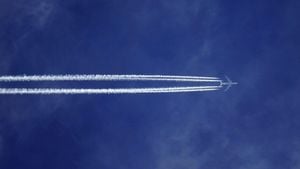The upcoming weeks are brimming with excitement as various space missions gear up for launch and international conferences on space policy are set to take place. This frenzy of activity reflects the ever-advancing ambitions and collaborations within the space exploration community.
To kick things off, the European Space Agency (ESA) is preparing for the return-to-flight mission of its Vega-C rocket, which is scheduled to take place on December 3, 2024. The rocket will launch the Sentinel-1C satellite, part of the European Union’s Copernicus Earth observation program. This mission is particularly significant as the Vega-C had experienced challenges previously, including its second flight failure back in December 2022 and additional setbacks during testing earlier this year. Now, after intensive troubleshooting and confidence rebuilding, ESA and its partners are poised for success as they aim to utilize the Sentinel-1C satellite for monitoring land and maritime environments.
The pre-launch media briefing for this mission will be livestreamed on ESA Web TV, giving space enthusiasts and interested media personnel the chance to witness last-minute preparations up close. Scheduled for November 27, 2024, at 3:00 PM CET (9:00 AM EST), this briefing promises to be informative, offering insights from ESA officials, including discussions on the satellite’s capabilities and its importance for environmental observation.
Meanwhile, ESA is also gearing up for another mission, Proba-3, slated for December 4. This mission focuses on studying the Sun’s corona, which is the outer layer of the Sun's atmosphere. Uniquely, Proba-3 will employ two small satellites to perform precision formation flying, allowing for the art of creating artificial solar eclipses. By maintaining tight alignment — within 1 millimeter — these satellites will enable scientists to observe solar phenomena, including solar flares and coronal mass ejections, with unprecedented clarity. The launch will take place using India’s Polar Satellite Launch Vehicle (PSLV), showcasing how space collaborations continue to cross borders.
To compound the excitement, December 5 marks the release of the latest Decadal Survey for solar and space physics by the U.S. National Academies of Sciences, Engineering, and Medicine. This report, which evaluates the top scientific questions of the next decade, becomes especially poignant when aligned with the Proba-3 mission. NASA's Science Mission Directorate head, Nicky Fox, expressed excitement around this simultaneous discourse on the advances of heliophysics and the ambitious Proba-3 project.
Shifting gears to conferences, the American Society for Gravitational and Space Research (ASGSR) will convene from December 3-7 in beautiful San Juan, Puerto Rico. The annual conference will be more than just presentations; it will serve as a melting pot for experts to discuss the latest research and experiments related to gravitational and space studies, championing innovation and collaboration across the field.
Just outside the capital, the 11th Annual Space Resiliency Summit will occur concurrently, taking place at National Harbor, Maryland, showcasing the U.S.'s commitment to advancing space security and sustainability planning for both military and civilian sectors.
Way over on the other side of the globe, Nairobi, Kenya, will host the 5th Space for Women Summit from November 27-29. This event emphasizes empowering women within the space sector, fostering discussions around inclusivity and the future of women’s contributions to space policy and exploration.
It’s clear from these initiatives and events how much can be achieved when nations come together, pooling resources and expertise. ESA’s Proba-3 and the Vega-C missions, along with significant reports being released and gatherings of international thought leaders, are indicative of this collaborative spirit. The intention behind these missions and conferences demonstrates how space continues to inspire advancements, education, and diplomatic relationships aimed at exploring the final frontier.
The weekend following these significant dates promises to bring growth and excitement about solar research, as data collection from Proba-3 and the follow-up discussions from the Decadal Survey will likely weave together threads of ambition and question. This continuous evolution of space exploration missions, global symposiums, and partnerships suggests broader horizons for the future of not only space research but also international cooperation.



